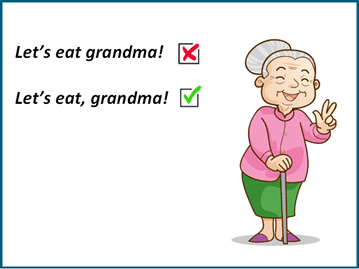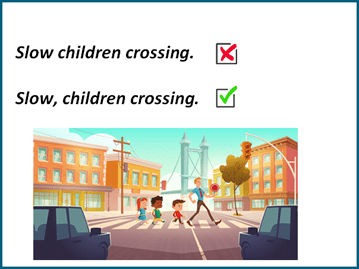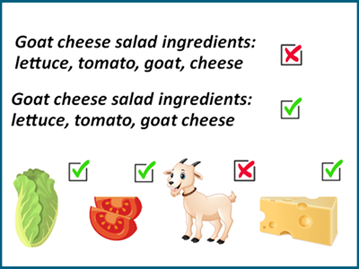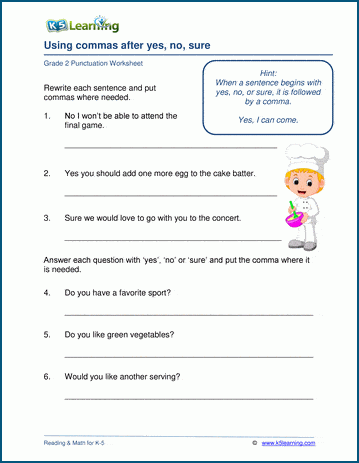Commas are tricky. There are so many rules around the use of the comma. The wrong use of a comma can lead to a funny grammar mistake that changes the meaning of a sentence entirely.
When to use commas
The comma is used to:
- break up two clauses, where a pause is needed in a sentence,
- to separate items in a list,
- before any coordinating conjunction (and, but for, or, nor, so, yet),
- after introductory adverbs and interjections,
- when attributing quotes,
- in addresses, dates and large numbers,
- between adjectives that modify the same noun
- to offset negation in a sentence.
There are so many rules around the use of the comma, it’s no wonder students struggle with it. This is an area that students start to practice as early as grade 1 and continue to work on throughout elementary school.
The missing comma error
When a comma is missing it can drastically change the meaning of a sentence.
Here are a couple of funny examples of sentences that are missing a comma.

or

The problem with adding too many commas
Vice versa, the addition of a comma also changes the meaning of a sentence.
For example:

Worksheets for comma practice
We’ve included worksheets on how to practice the use of the comma in our punctuation area of our grammar worksheets section. Your best starting point is this page to find the comma worksheets for each grade.
A sample comma practice worksheet for grade 2 students.


